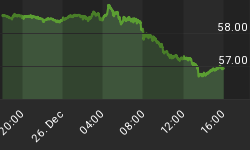Offshore wind power can power the entire U.S. East Coast in a viable manner if the offshore turbines are spread over a wide area and connected in their own grid to smooth out fluctuations from wind generation, a new academic study says.
Leveling out these fluctuations is the biggest obstacle to wind power serving as an alternative to conventional sources, the researchers from the University of Delaware and Stony Brook University say in a study published this week in the Proceedings of the National Academies of Sciences.
"As wind power becomes a higher proportion of all generation, it will become more difficult for electric system operators to effectively integrate additional fluctuating power output," the study says. "Power fluctuations are important if wind is to displace significant amounts of carbon-emitting energy sources."
The group studied five years of wind data from 11 meteorological stations along 1,550 miles of coastline off the eastern United States. While each station showed the expected ups and downs depending on how the wind was blowing, simulating a power line connecting the stations showed a leveling of this fluctuation.
"The output from the entire set of generators rarely reaches either low or full power, and power changes slowly," the researchers say in the study. "Notably, during the five-year study period, the amount of power shifted up and down but never stopped."
The authors note that existing projects for offshore wind power are authorized a state level and involve connecting the wind power to land grids separately, creating the problem of managing the fluctuating power from each individual project. Typically, this is done with mechanisms such as reserve generators, redundant power line routes, and ancillary service markets.
But, say the authors, if all the offshore generators were connected in their own power grid, this problem would be avoided. Such an Atlantic Transmission Grid, managed by its own Independent System Operator (ISO), could provide a reliable source of power sufficient to meet the needs of all the adjacent states.
The ISO would have a mix of owners - private firms, existing electric utilities, and public power authorities. The proposed "Atlantic ISO" would have some unique characteristics because it would exist primarily in federal waters and bridge many jurisdictions on land, the study says.
By. Darrell Delamaide for Oilprice.com who offer detailed analysis on Crude oil, Geopolitics, Gold and most other Commodities. They also provide free political and economic intelligence to help investors gain a greater understanding of world events and the impact they have on certain regions and sectors. Visit: http://www.oilprice.com
















